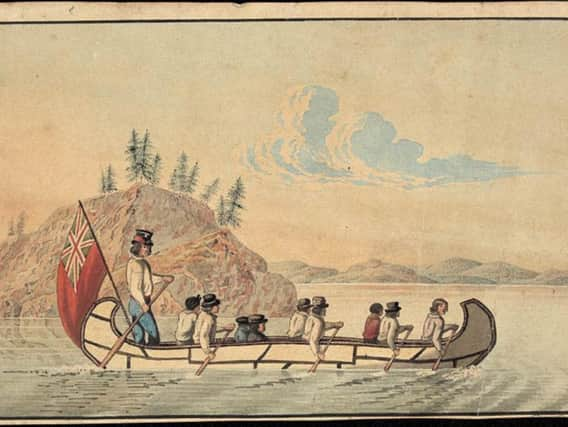The Orkney woman who disguised herself as a man to work and travel


Few knew the true identity of Isobel Gunn, from Tankerness, who posed as a man to join the Hudson's Bay Company and journey to their fur trading stations at Rupert's Land, now part of modern-day Canada.
Her cover was mercilessly exposed, however, when - still dressed as a man - she suddenly went into labour on the floor of a colleague's home.
Advertisement
Hide AdAdvertisement
Hide AdAged 26, Isobel Gunn boarded the Prince of Wales ship at Stromness in June 1806, as John Fubbister.
She had signed a three-year contract with the firm, who anchored their boats in the shelter of the Orkney harbour for final preparations and recruitment ahead of the long journey west.
She was paid £8 a year for her employment. Some say Gunn was motivated to join the ship disguised as a man - HBC didn't employ European women in their stations - to access earnings and opportunities not normally open to females of the day.
Some say she was inspired by the travels of her brother while others say she boarded the ship to purse the man she loved.
On the same ship was John Scarth, who was later named as the father of her child, but it is not clear if she was the man she wanted to follow west.
On arrival in Moose Factory in August 1806, now part of Ontaria, Gunn quickly proved herself as a worker.
She and her colleagues voyaged up the Albany River to Henley House the following month to deliver provisions and goods for trading with the group later returning with wood for boat building.
In May, 1807, she was part of 1800-mile expedition to deliver supplies to HBC posts with further long-distance trips to follow.
Advertisement
Hide AdAdvertisement
Hide AdIt is believed that Gunn was one of the first European woman in what is now Western Canada but she was able to keep her cover given her ability to work had and act like a 'company man'.
Hugh Heney, who led one of the expeditions, wrote that Gunn “worked at anything and well like the rest of the men".
During the winter of 1807, Gunn was stationed at the HBC post in Pembina, in what is now Alberta, and was among a number of HBC employees who spent the festive season at an outpost of rival company North West Company.
On December 29, Gunn told Alexander Henry, a fur trader for the NWC, she was unwell and begged him for shelter.
It was at Henry's house that her true identity as a woman was revealed with the trader writing in his diary of the extraordinary moment John Fubbister was no more.
Henry wrote: “I was surprised at the fellow’s demand; however, I told him to sit down and warm himself. I returned to my own room, where I had not been long before he sent one of my people, requesting the favour of speaking with me.
"Accordingly I stepped down to him, and was much surprised to find him extended on the hearth, uttering dreadful lamentations; he stretched out his hands toward me, and in piteous tones begged me to be kind to a poor, helpless, abandoned wretch, who was not of the sex I had supposed, but an unfortunate Orkney girl, pregnant, and actually in childbirth.”
Gunn had a son, who she called James Scarth. Her cover was blown, and she quickly became known as MAry.
Advertisement
Hide AdAdvertisement
Hide AdShe lost her labourer's job and went to work in Martin Falls as a washerwoman and possibly a nurse before she was discharged from service in September 1809, sailing home that month on the same ship on which she arrived.
Back in Orkney, she worked knitting mittens and stockings. It was a job she was still doing in November 1861, when she died at the age of 81.
Source: The Canadian Encyclopedia